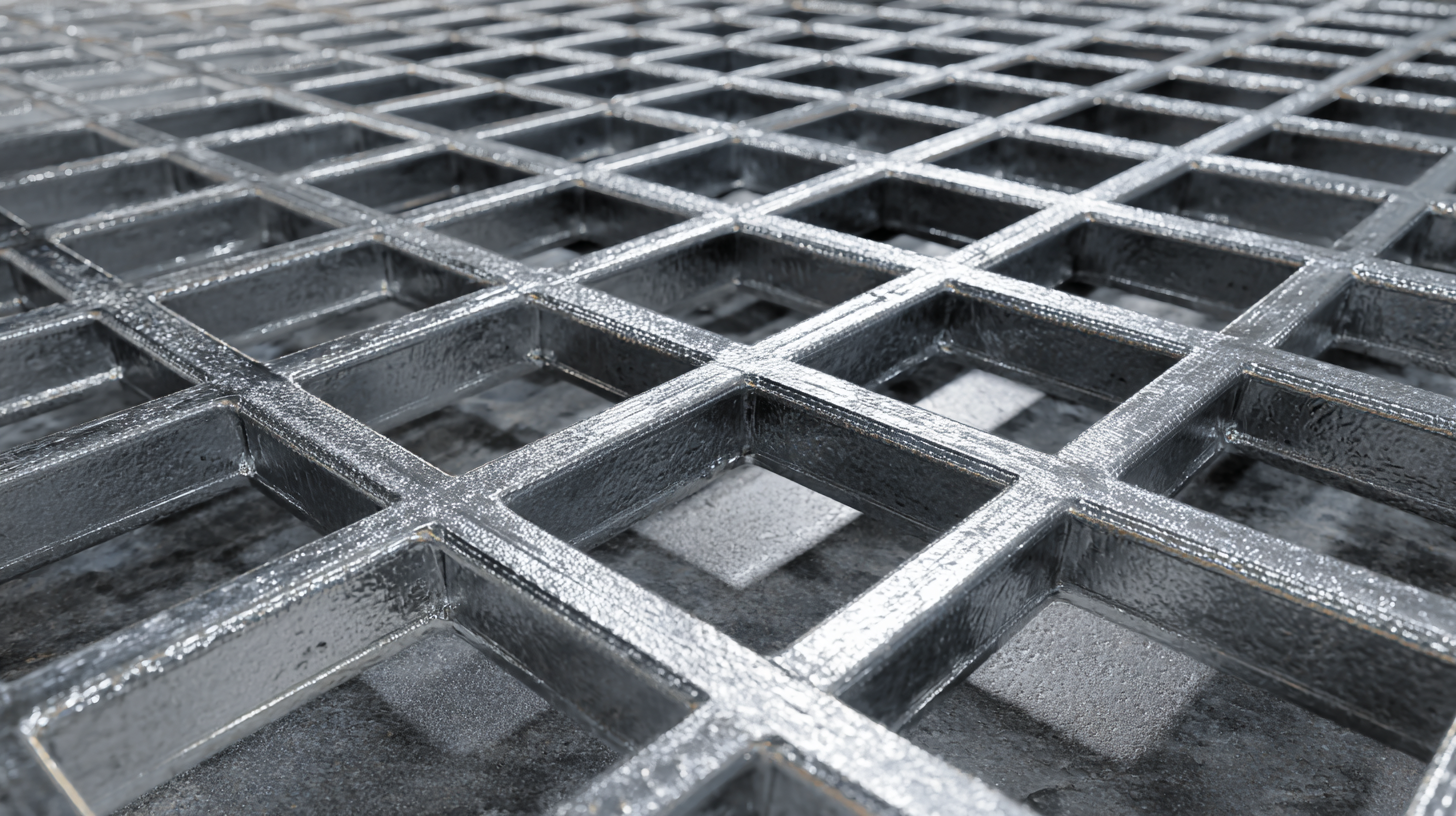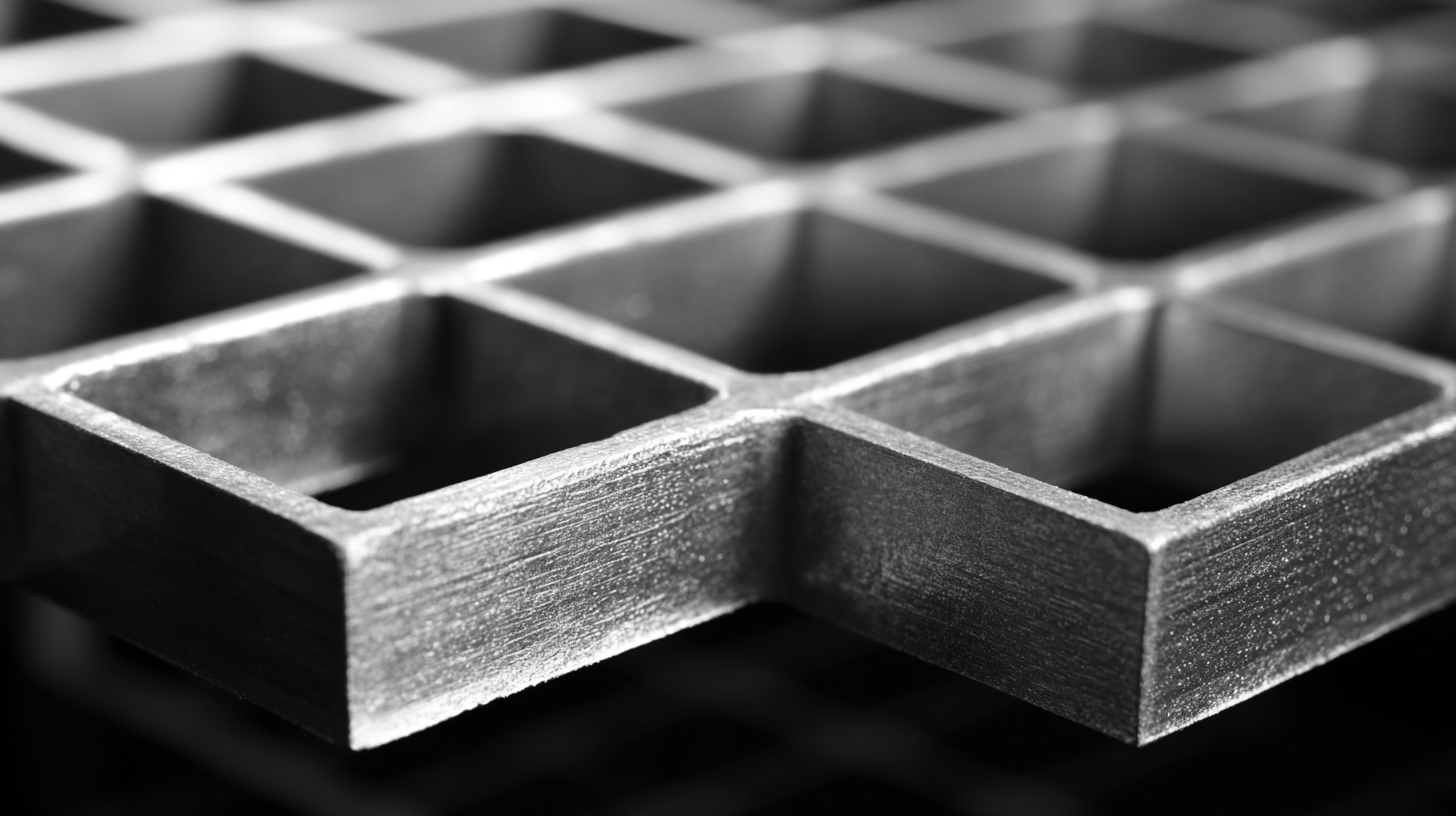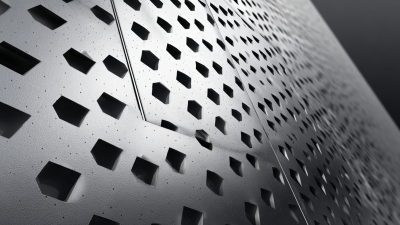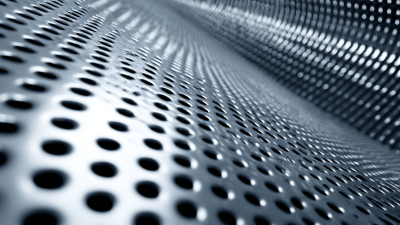Cart
Understanding the Benefits of Aluminum Grating in Modern Construction Designs
In modern construction designs, the selection of materials significantly influences both functionality and aesthetics. One such material that has gained prominence is aluminum grating, which offers a unique blend of durability, lightweight properties, and resistance to corrosion. According to a recent market analysis by ReportLinker, the global aluminum grating market is projected to grow at a CAGR of 6.2% from 2021 to 2028, driven by its increasing applications in various sectors including commercial and industrial construction. The versatility of aluminum grating allows it to be used in flooring, walkways, and even decorative elements, ensuring safety and design flexibility while reducing maintenance costs. As construction projects increasingly prioritize sustainable and efficient solutions, aluminum grating emerges as an optimal choice, promoting a combination of resilience and modern aesthetics essential for contemporary architectural needs.

Exploring Unique Applications of Aluminum Grating in Innovative Construction Projects
Aluminum grating has emerged as a versatile solution in modern construction, offering unique applications that enhance both functionality and aesthetics. One of the most noteworthy uses is in architectural walkways and platforms, where the lightweight yet durable properties of aluminum provide safety and ease of maintenance. Grating systems are designed to allow for effective drainage and ventilation, making them ideal for outdoor environments or industrial settings. This functionality is particularly beneficial in projects requiring compliance with stringent safety regulations, as the slip-resistant surfaces of aluminum grating reduce the risk of accidents.

Moreover, aluminum grating finds its role in creative design elements, such as facades and shading systems. Architects are increasingly utilizing aluminum as a design feature, allowing for the incorporation of intricate patterns and geometric shapes that contribute to the building’s aesthetics. This innovative use of aluminum not only elevates the visual appeal of structures but also improves energy efficiency by minimizing heat gain through strategic shading. With the flexibility in custom designs, aluminum grating is becoming integral to projects that prioritize sustainability and modern aesthetics simultaneously.
Advantages of Using Aluminum Grating for Safety and Durability in Building Designs
Aluminum grating has emerged as a popular choice in modern construction designs due to its unparalleled safety and durability. One of the key advantages of aluminum grating is its inherent resistance to corrosion, which is vital in environments exposed to moisture and chemicals. A report by the American Institute of Steel Construction highlights that aluminum grating can last up to 50 years with minimal maintenance compared to traditional steel options, which typically require more frequent replacements and care. This longevity not only reduces material costs over time but also minimizes the disruption typically associated with maintenance work.
In terms of safety, aluminum grating provides excellent slip resistance, which is crucial in commercial and industrial settings. According to the Occupational Safety and Health Administration (OSHA), slips and falls are among the leading causes of workplace accidents. By incorporating aluminum grating in flooring and walkways, builders can enhance safety for workers and visitors alike.
Tip: When specifying aluminum grating for your projects, consider variations such as welded bar grating or swage-lock grating for optimal load-bearing capacity and drainage efficiency.
Another advantage is the lightweight nature of aluminum, which simplifies installation and reduces the structural load on buildings. A study from the Construction Specifications Institute indicates that reducing weight in construction materials can improve energy efficiency and lower overall project costs.
Tip: Always consult with engineering professionals to ensure the aluminum grating chosen meets the specific load requirements and environmental conditions of your project.
How Aluminum Grating Contributes to Sustainability in Modern Construction Practices
Aluminum grating is emerging as a significant contributor to sustainability in modern construction practices, particularly in the context of eco-friendly architectural designs. With its lightweight yet durable properties, aluminum grating allows for efficient use of resources and energy during both the construction process and throughout the material's lifespan. As architects increasingly seek to integrate green features into their projects, aluminum grating provides an ideal solution for applications such as walkways, drainage systems, and rooftop gardens.
The recent trend towards green roofs, highlighted by various architectural initiatives, showcases how aluminum grating can enhance such sustainable elements. By supporting vegetation and facilitating drainage, aluminum grating helps in creating living roofs that improve urban biodiversity and reduce the heat island effect. This aligns with the broader goals of modern construction, which prioritize reducing environmental impact while promoting innovative design solutions that meet both functional and aesthetic needs. As the construction industry moves towards more sustainable methodologies, aluminum grating stands out as a valuable material in the pursuit of eco-conscious building practices.
Choosing the Right Type of Aluminum Grating for Various Structural Needs
In modern construction designs, the selection of materials can greatly influence both aesthetic appeal and functional performance. Aluminum grating stands out as a versatile option, offering lightweight, durability, and resistance to rust, which makes it ideal for a variety of structural needs. When choosing the right type of aluminum grating, it’s essential to consider the specific application, whether it be flooring, walkways, or ventilation systems. Different patterns and load capacities can cater to varied loads and environmental conditions, ensuring safety and longevity in construction.
**Tips:** When selecting aluminum grating, be mindful of the standard load charts provided by manufacturers. These charts can guide you in choosing the appropriate thickness and spacing based on the expected foot traffic and potential equipment loads. Additionally, consider the environmental factors such as exposure to chemicals or saltwater, as these will influence the type of surface treatment you may need to enhance corrosion resistance.
Furthermore, explore the benefits of integrating aluminum grating with other advanced materials. For instance, combining aluminum with fiber Bragg grating technology can enhance structural integrity while introducing opportunities for smart monitoring systems. This can lead to safer and more efficient construction designs, opening doors to innovative architectural applications.
Understanding the Benefits of Aluminum Grating in Modern Construction Designs
Maintenance Tips for Maximizing the Longevity of Aluminum Grating Installations
Aluminum grating has become a preferred choice in modern construction designs due to its lightweight, corrosion resistance, and durability. To ensure the longevity of aluminum grating installations, proper maintenance is key. Regular cleaning is essential to prevent debris accumulation that can lead to oxidation. Industry reports indicate that when properly maintained, aluminum grating can last up to 30 years, making it a cost-effective solution in the long run.
In addition to routine cleaning, periodic inspections for signs of wear and tear should be conducted. This may include checking for surface scratches, deformation, or corrosion. According to a study by the Aluminum Association, maintaining an optimal pH level and applying protective coatings can enhance the lifespan of aluminum installations significantly. Product innovations, such as high-traction walk ramps designed with advanced grating technology, suggest a focus not only on functionality but also on safety. By investing in regular maintenance and remaining aware of product advancements, property owners can maximize the benefits of aluminum grating in their construction projects, ensuring both structural integrity and aesthetic appeal.



